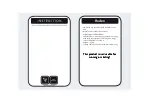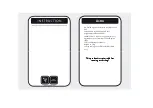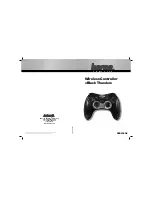
Installation and Operation Manual
2
IMPORTANT SAFETY INSTRUCTIONS
1. Refer installation and servicing to qualified service personnel. High voltage is present inside unit. Incorrect
installation or use may result in risk of electric shock or fire. No user serviceable parts in this unit.
2. Remove all sources of power, photovoltaic and battery before servicing or installing.
3. WARNING - RISK OF EXPLOSIVE GASES
a) Working in the vicinity of lead-acid batteries is dangerous. Batteries produce explosive gasses during normal
battery operation.
b) To reduce risk of battery explosion, follow these instructions and those published by battery manufacturer and
manufacturer of any equipment you intend to use in vicinity of battery.
4. PERSONAL PRECAUTIONS
a) Someone should be within range of your voice or close enough to come to your aid when you work near a lead-
acid battery.
b) Have plenty of fresh water and soap nearby in case battery acid contacts skin, clothing or eyes.
c) Wear complete eye protection and clothing protection. Avoid touching eyes while working near battery.
d) If battery acid contacts skin or clothing, wash immediately with soap and water. If acid enters eye, immediately
flood eye with running cold water for at least 10 minutes and get medical attention immediately.
e) NEVER smoke or allow a spark or flame in vicinity of battery.
f) Be extra cautious to reduce risk of dropping metal tool onto battery. It might spark or short circuit battery or other
electrical part that may cause explosion.
g) Remove personal metal items such as rings, bracelets, necklaces, and watches when working with a lead-acid
battery. A lead-acid battery can produce a short circuit current high enough to weld a ring or the like to metal,
causing a severe burn.
5. PREPARING TO CHARGE
a) Never charge a frozen battery.
b) Be sure battery is mounted in a well ventilated compartment.
c) Add distilled water in each cell until battery acid reaches level specified by battery manufacturer. This helps
purge excessive gas from the cells. Do not overfill. For a battery without cell caps, carefully follow manufacturers
charging instructions.
6. CHARGER LOCATION & INSTALLATION
a) Controller employs components that tend to produce arcs or sparks. NEVER install in battery compartment or in
the presence of explosive gases.
b) Protect all wiring from physical damage, vibration and excessive heat.
c) Insure that the controller is properly setup for the battery being charged.
d) Do not expose controller to rain or snow.
e) Insure all terminating connections are clean and tight to prevent arcing and overheating.
f) Charging system must be properly installed as described in these instructions prior to operation.
g) Do not connect to a PV array capable of producing greater than 24 amps of short circuit current @ 25
°
C.
SAVE THESE INSTRUCTIONS




































